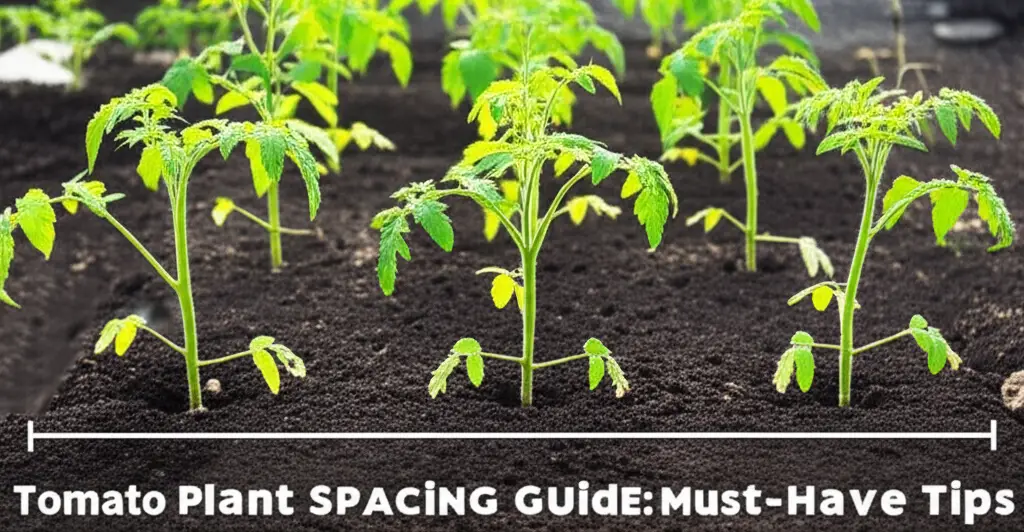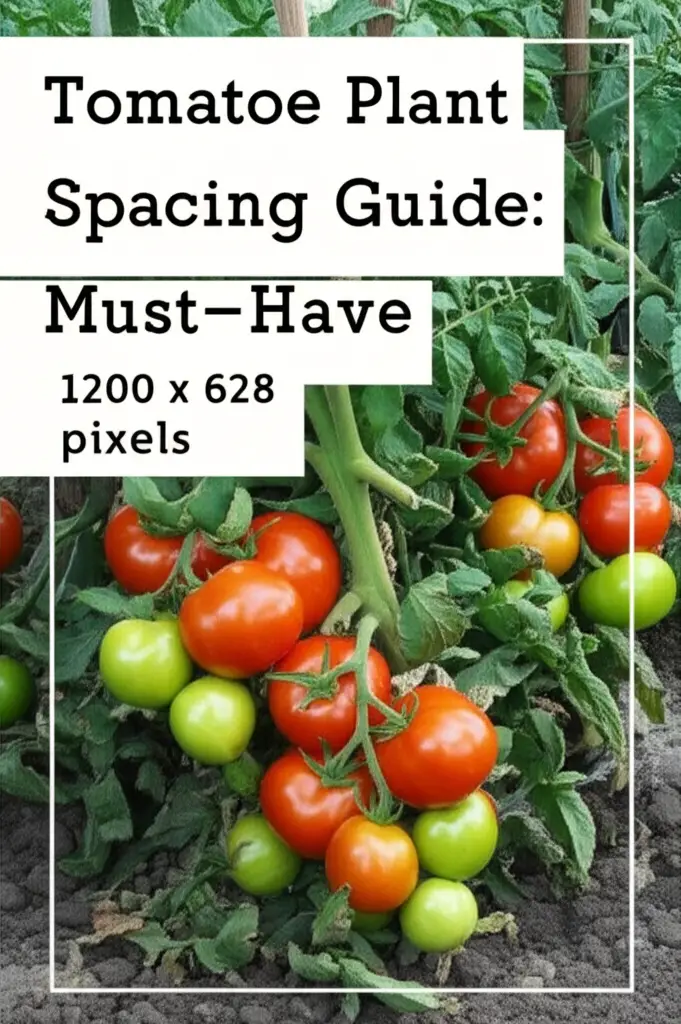This comprehensive guide covers everything you need to know about tomato plant spacing, from determining the right distance between plants to understanding the factors influencing spacing requirements. Learn how proper spacing maximizes yield, prevents diseases, and ensures healthy tomato plants.

Introduction: Why Tomato Plant Spacing Matters
Growing juicy, ripe tomatoes is a rewarding experience, but achieving a bountiful harvest requires more than just planting seeds. Proper tomato plant spacing is crucial for healthy plant growth and maximizing your yield. Overcrowding can lead to stunted growth, increased disease susceptibility, and reduced fruit production. On the other hand, spacing plants too far apart can waste valuable garden space. This guide will equip you with the knowledge to space your tomato plants effectively, leading to a thriving tomato garden.
Factors Influencing Tomato Plant Spacing
Several factors influence the ideal spacing for tomato plants:
Tomato Variety: Determinate (bush) tomatoes generally require less space than indeterminate (vining) varieties.
Support System: Using cages or stakes allows for closer spacing compared to sprawling plants.
Growing Method: Spacing requirements differ for in-ground gardening, raised beds, and containers.
Climate: Hot and humid climates might necessitate wider spacing to improve airflow and reduce disease.
Spacing Guidelines for Different Tomato Types
Determinate (Bush) Tomatoes
Determinate tomatoes are compact and grow to a specific height before stopping. They typically require less space than indeterminate varieties.
Without Support: Space plants 2-3 feet apart.
With Cages: Space plants 1.5-2 feet apart.
Indeterminate (Vining) Tomatoes
Indeterminate tomatoes continue to grow and produce fruit throughout the season. They require more space and support.
With Stakes: Space plants 1.5-2 feet apart.
With Cages: Space plants 2-3 feet apart.
Without Support (Sprawling): Space plants 3-4 feet apart.
Spacing in Raised Beds and Containers
Raised Beds: Follow the same spacing guidelines as in-ground gardening, adjusting based on the width of your raised beds.
Containers: Plant one tomato plant per 5-gallon container for optimal growth. Larger indeterminate varieties may benefit from a 7-10 gallon container.
Benefits of Proper Tomato Plant Spacing
Proper spacing offers numerous advantages:
Improved Air Circulation: Adequate spacing promotes air circulation, reducing the risk of fungal diseases such as early blight and late blight.
Increased Sunlight Penetration: Properly spaced plants receive more sunlight, leading to healthier growth and increased fruit production.
Easier Harvesting: Wider spacing makes it easier to access and harvest ripe tomatoes without damaging the plants.
Reduced Pest and Disease Problems: Good airflow and sunlight penetration create a less favorable environment for pests and diseases.
Stronger Plants: With sufficient space, plants develop stronger root systems and are better able to absorb nutrients.
Tips for Maximizing Space in Your Tomato Garden
Vertical Gardening: Utilize trellises, stakes, or cages to grow tomatoes vertically, saving valuable ground space.
Intercropping: Plant compatible crops like basil, lettuce, or carrots between tomato plants to maximize space utilization. ([Link to an article about companion planting if available])
Succession Planting: Plant tomato seedlings at staggered intervals to extend your harvest season and optimize space. ([Link to an article about succession planting if available])
Pruning: Regularly prune indeterminate tomatoes to maintain their size and shape, preventing overcrowding. ([Link to an article about pruning tomatoes if available])
Common Tomato Plant Spacing Mistakes to Avoid
Overcrowding: Overcrowding is the most common mistake and leads to numerous problems, including reduced yield and increased disease susceptibility.
Inconsistent Spacing: Maintain consistent spacing between plants to ensure uniform growth and access to resources.
Ignoring Variety Requirements: Different tomato varieties have different spacing needs. Research your specific variety before planting.
Neglecting Support Structures: Indeterminate tomatoes require support to prevent sprawling and overcrowding.
FAQs: Addressing Your Tomato Spacing Concerns
Q: Can I plant two tomato plants in one hole?
A: It’s generally not recommended to plant two tomato plants in the same hole. This can lead to overcrowding and competition for resources.
Q: How far apart should I plant cherry tomatoes?
A: Cherry tomatoes, even indeterminate varieties, tend to be smaller. You can generally space them slightly closer, around 12-18 inches apart with support.
Q: What happens if I plant my tomatoes too close together?
A: Planting tomatoes too close together can result in stunted growth, reduced fruit production, and increased susceptibility to diseases due to poor air circulation and sunlight penetration.
Q: How do I know if my tomato plants are overcrowded?
A: Signs of overcrowding include tangled vines, poor airflow, difficulty accessing fruit, and increased disease incidence.
Q: Can I transplant overcrowded tomato plants?
A: Yes, you can transplant overcrowded tomato seedlings, preferably when they are still small. Be careful not to damage the roots during the transplanting process.
Conclusion: Reap the Rewards of Proper Spacing
Proper tomato plant spacing is an essential aspect of successful tomato gardening. By understanding the factors that influence spacing requirements and following the guidelines outlined in this guide, you can maximize your yield, minimize disease problems, and enjoy a bountiful harvest of delicious, homegrown tomatoes. Remember to consider your specific tomato variety, growing method, and climate when determining the optimal spacing for your plants. Now get out there and enjoy the fruits (or should we say, tomatoes) of your labor!
(Outbound links to authoritative sources like university extension websites or gardening publications related to tomato growing, spacing, diseases, pruning, etc., would be included here based on content availability and relevance.)

